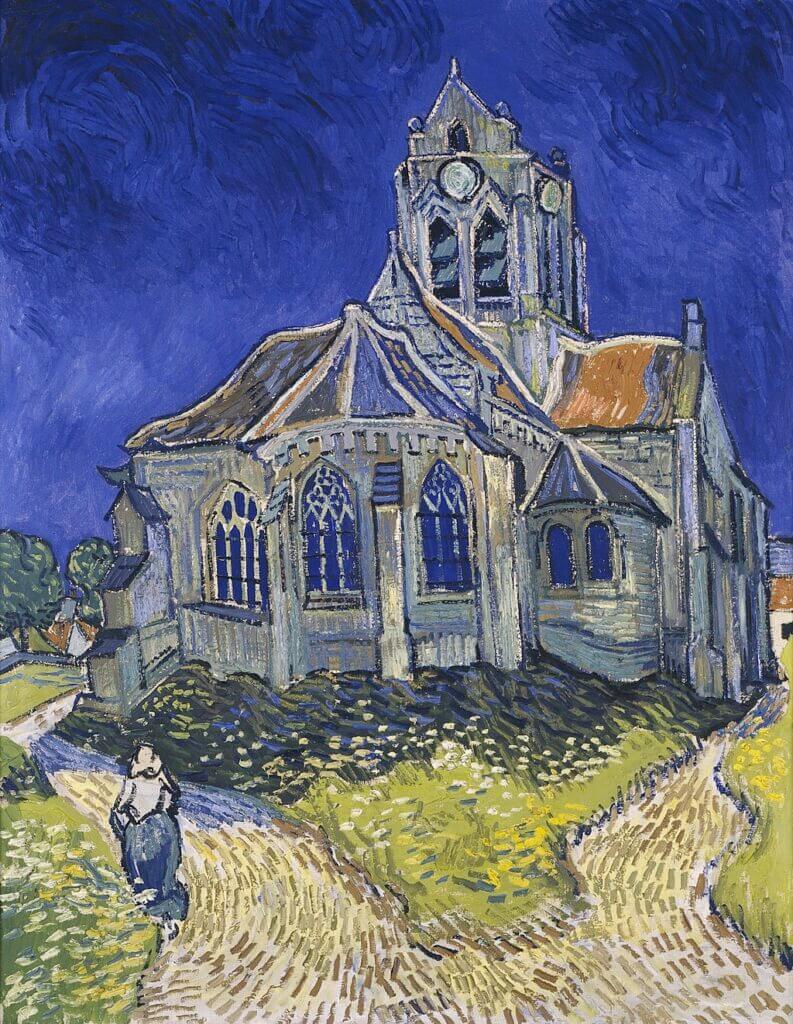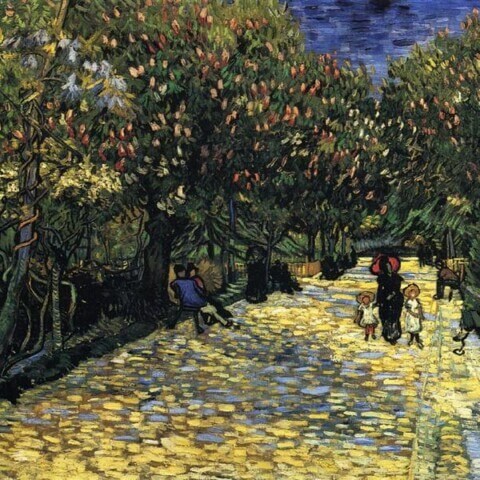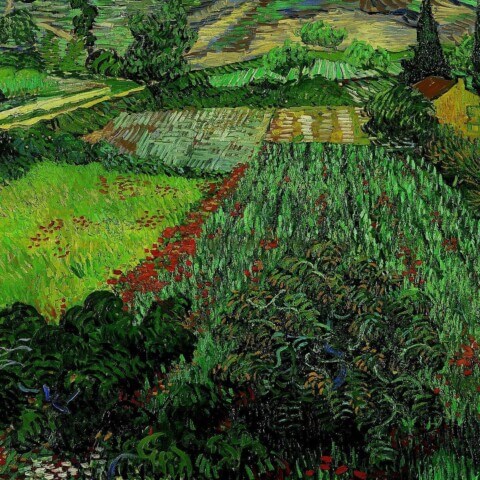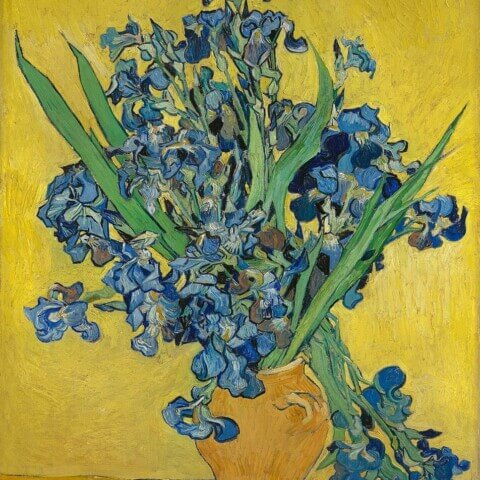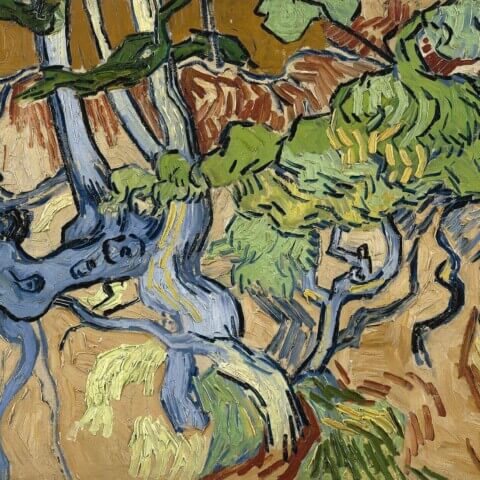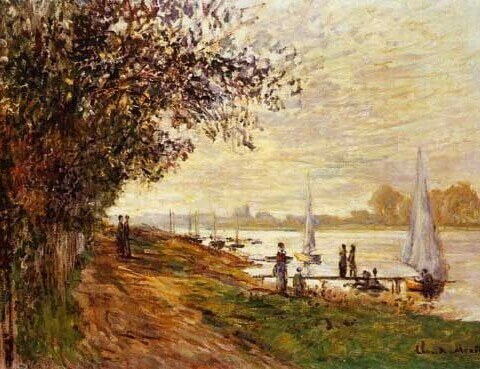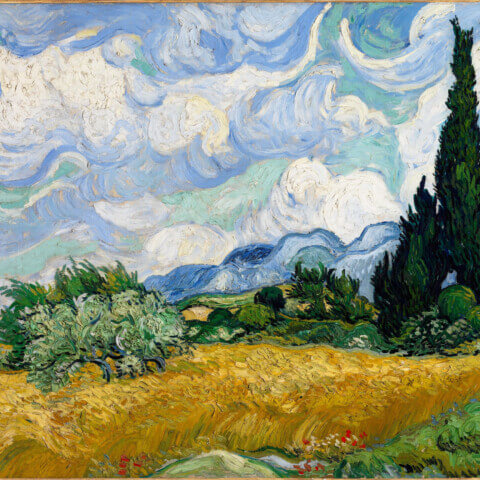Vincent van Gogh’s “The Church at Auvers” is a stunning and highly recognizable piece of art. Painted in 1890, during the last few months of Van Gogh’s life, this work exemplifies the Post-Impressionist style that he is known for.
Post-Impressionism is an art movement that emerged in the late 19th century. It extends Impressionism while rejecting its limitations and attempts to delve deeper into the emotional and symbolic aspects of painting. Like other Post-Impressionists, Van Gogh emphasized vivid colors and distinctive brush strokes. However, Van Gogh’s style is unique in its emotional intensity, bold color choices, and dramatic, expressive brushwork.
“The Church at Auvers” is an oil on canvas painting measuring 37.0 in × 29.1 in. It depicts the old gothic church of Auvers-sur-Oise, a small village northwest of Paris, where Van Gogh resided in the last months of his life under the care of Dr. Paul Gachet. Despite its seemingly simple subject matter, the painting is rich with emotion and symbolism.
The church, with its blues and purples, sits under a dramatic, swirling sky, seemingly detached from the rest of the village represented by the small houses in the background. The pathway leading to the church is empty and disjointed, and it seems to direct the viewer’s gaze not towards the entrance of the church but rather towards the sky. This has been interpreted as Van Gogh’s expression of his inner turmoil and feelings of alienation.
What makes “The Church at Auvers” particularly special is not only the powerful visual style but also the context in which it was created. Van Gogh painted it shortly before his death by suicide, during a period of intense emotional distress. In this light, it can be seen as a poignant reflection of the artist’s state of mind – his feelings of isolation and his spiritual struggle. It’s a piece that offers viewers a glimpse into the troubled but brilliant mind of one of history’s greatest artists.
Additionally, “The Church at Auvers” gained more recent fame through its association with the British science fiction series “Doctor Who”. In the episode “Vincent and the Doctor”, the painting is used as a central plot device, adding to its cultural significance and recognizability.
“The Church at Auvers” remains on display at the Musée d’Orsay in Paris, a testament to Van Gogh’s profound impact on the world of art. It’s a captivating piece that continues to inspire and intrigue viewers more than a century after its creation.
At our art gallery, we take pride in offering comprehensive global shipping to our esteemed clientele. We understand the significance of your art acquisitions and the need to transport them with utmost care. Hence, we are committed to delivering your chosen paintings to any address worldwide and free of any additional charge.
Our reliable courier service partners are experienced in handling precious art pieces and ensure that your painting reaches you in pristine condition. We offer fully insured, door-to-door delivery, providing you with peace of mind that your artwork is protected during transit.
Moreover, to accommodate your unique framing preferences, we offer the distinctive service of sending your purchased artwork directly to any framer across the globe. This enables you to have your painting framed locally by your trusted framer, reducing the risk of damage during transportation.
Regardless of your location or your framer’s, we strive to make the process as seamless as possible. It is our goal to provide exceptional service that caters to your needs and ensures the safe delivery of your valuable artwork.
We invite you to experience our hassle-free, worldwide shipping service, which is aimed at delivering your prized art pieces safely and efficiently, wherever you may be.
Similar paintings
Join our newsletter
Signup for our newsletter and receive our inspiration guide and 20% discount on your first order!

